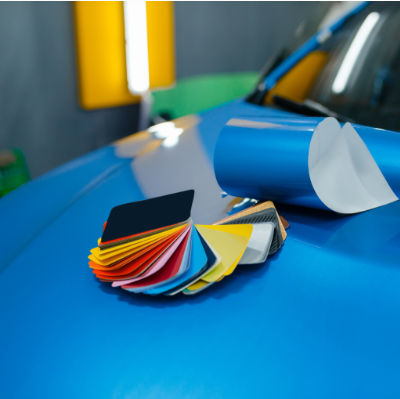For many enthusiasts, achieving a perfect finish is an obsession. It boosts your pride as a car owner and makes your automobile the envy of the neighborhood. A road is a dangerous place. It can take a toll on your vehicle in so many ways, ranging from the smallest bird bomb to major swirls from rock chips. This disrupts your vehicle’s pristine paint job, leading to a loss in luster and pulchritude.
Thanks to the ever-developing detailing industry, scientists have developed a cutting-edge restoration mechanism tailored for automobiles. And yes, achieving that perfect shine requires pursuing the art of professional paint correction elizabeth NJ. What is it? What are the need-to-knows about it?
This article will explain what paint correction is, how it works, and why you should invest in it for your vehicle. Come and join us in our digital auto studio right away!

What is Paint Correction?
Paint correction is the process of repairing a car’s paintwork by removing surface flaws like oxidation, swirl marks, and small scratches. A polished surface that makes the real color underneath visible. Professional technicians achieve this using various techniques and tools during a multi-step process.
Paint correction requires three essential steps, which will be explained in detail below.
How It Works (Paint Correction Process)
Professional VIP Detailing’s paint correction Elizabeth NJ, at its core, is a multi-step process, but it commonly includes three main processes: pre-wash, compounding, and waxing and sealing.
Pre-Wash
This is the most important step of all. All dirt, debris, and grime on the vehicle’s paint must be removed first to prevent any damage from occurring during the rest of the process. Professional detailers will often take this opportunity to perform a thorough inspection of the vehicle’s paintwork.
Compounding
Compounding is the process of using a polishing compound to remove minor surface defects, such as scratches and oxidation. This step requires the use of specialized tools that vibrate at high speed, such as buffers and dual-action polishers. Professional detailers must be careful during this step so as not to cause any further damage or remove too much paint.
Waxing and Sealing
Once the compounding step is complete, it’s time to wax and seal the car’s paint. Waxes help protect the newly polished paintwork from contaminants and ultraviolet (UV) rays, while sealants create a defensive barrier that keeps water droplets from “beading” and sitting on the surface.
Types of Common Paint Correction Packages
A taste of what’s to come: Simple Paint Enhancement
This is the perfect package for those who are looking to give their vehicle a quick spruce-up without breaking the bank. It includes all of the pre-wash, compounding, and waxing/sealing processes that professional detailers offer, but it’s tailored specifically for vehicles that have very minor surface defects, such as paint fading, water spotting, and such.
Entry-level restoration: 1-step Paint Correction
This package is ideal for vehicles that have medium-level surface imperfections, such as light scratches and swirl marks. It includes the same basic steps of pre-wash, compounding, and waxing/sealing, but takes it to the next level with additional manual correction techniques and specialized polishing products, such as wet sanding, etc.
For those who want perfection: 2 or 3-step Paint Correction
This is the ultimate package for those who want flawless paintwork. It includes all of the steps from simple paint enhancement and 1-step paint correction, plus additional buffing and polishing techniques with specialty detailing products. This will ensure that your car looks its best and helps to protect it from future damage and experience the difference with paint correction Elizabeth NJ.
Why Invest in Professional Paint Correction?
There are many benefits to investing in professional paint correction—even beyond aesthetic enhancement. Here’s why you should get it done for your vehicle:
Ameliorates paint longevity
Professional paint correction helps to get rid of imperfections, which can prevent further damage from occurring. After the correction process is finished, your vehicle’s original protective coating will be restored and protected with a fresh layer of wax or sealant. This will help keep your car looking great for years to come!

Bumps up the resale value
If you ever decide to sell your car, a fresh paint job will surely be attractive to potential buyers. Investing in professional paint correction can make the difference between getting a good price and not.
Enhances luster and shine
When done properly, paint correction can restore the original factory finish of your vehicle, giving it that showroom-worthy shine and luster.
Eradicates almost all kinds of imperfections inflicted
The art of paint correction can be used to get rid of different kinds of imperfections, ranging from minor scratches and oxidation to major swirls and water spots. It’s a great way to restore your car’s original beauty without having to resort to costly repairs or repainting jobs.
Can be paired up with PPF and/or Ceramic Coating for robust protection
For those who want an extra layer of protection, paint correction can be done in tandem with protective films (PPF) and ceramic coatings. This will keep your car looking good for years to come—even when exposed to extreme weather conditions or bird droppings.
DIY or Leave it to the Professionals: Pros and Cons
DIY Pros
Affordable – Doing it yourself is usually cheaper than having a professional do it.
Satisfaction of a job well done – Nothing beats the satisfaction of doing something yourself and being able to take pride in the results.
Time-saving – Unless you’re extremely detail-oriented, completing the task yourself may take less time than hiring a professional.
DIY Cons
Poor results – Without the right tools and techniques, it’s easy to end up with lackluster results.
Time-consuming – Doing it yourself can take much longer than having a pro do it, depending on your skill level and attention to detail.
Risky – You risk damaging the paintwork, which can be costly to repair.
Professional Pros
High-quality results – Professionals have the necessary experience and tools to get the job done right for the entire vehicle.
Time-saving – Hiring a professional is usually much faster than doing it yourself, as they’re equipped with all of the right tools for the job.
Safe – You won’t have to worry about damaging the paintwork, as professionals know how to handle delicate surfaces, as well as possess the right tools, such as a cutting compound or microfiber buffing pad.
Professional Cons
Limited availability – Not all detailers offer professional paint correction services.
Time-consuming – It can take longer if you’re looking for a particular level of quality.
Relatively expensive – Professional paint correction can be quite costly, depending on the size of the vehicle and the type of service required.
Professional paint correction is worth investing in if you’re serious about keeping your car looking its best. Not only will it restore the original beauty of your vehicle, but it will also help to protect the paintwork from further damage and give you peace of mind.
If you’re looking for a quick fix that won’t break the bank, there are plenty of DIY options available as well. Whichever route you decide to take, be sure to do your research and find a solution that meets your needs.
FAQs on Paint Correction
How much does paint correction usually cost?
The cost of paint correction varies depending on the size of the vehicle, the amount of work required, and the level of quality desired. It can range anywhere from $150 to over $1000. It’s also important to factor in additional costs such as detailing products and protective coatings that may be necessary for a thorough job.
How long does paint correction typically take?
The amount of time required for a job depends on the size of the vehicle, the level of detail desired, and how experienced the detailer is. It can range anywhere from 3 to 8 hours.



